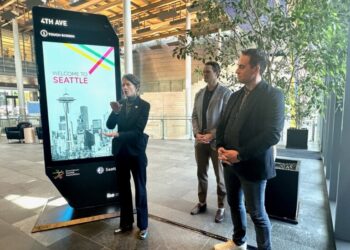Sydney is at the forefront of urban innovation, leveraging digital twin technology to create a smarter, more resilient city. Through initiatives like the NSW Spatial Digital Twin and the Liveable City Digital Twin, Sydney is transforming urban planning, infrastructure management, and sustainability efforts.
Understanding Digital Twins
A digital twin is a virtual representation of a physical entity, system, or process. In urban contexts, it integrates real-time and historical data to model the city’s infrastructure, environment, and activities. This enables stakeholders to simulate scenarios, predict outcomes, and make informed decisions.
Key Components of Sydney’s Digital Twin Initiative
A. NSW Spatial Digital Twin (SDT)
The NSW SDT, led by DCS Spatial Services, offers a 4D (3D plus time) model of the real world, facilitating cross-sector collaboration. It integrates vast amounts of data, allowing users to visualize and analyze information for improved decision-making.
B. Liveable City Digital Twin
Piloted in Western Sydney, this precinct-level digital twin focuses on urban liveability and climate adaptability. It employs algorithms for shadow computation and monitors movements, aiding in planning and policy decisions.
Applications and Benefits
A. Urban Planning and Infrastructure
Digital twins enable planners to simulate developments, assess impacts, and optimize designs. For instance, in Barangaroo, digital twin technology facilitated real-time planning and stakeholder engagement, enhancing efficiency and reducing costs.
B. Environmental Monitoring
By integrating data on weather, emissions, and traffic, digital twins help in monitoring environmental factors. This supports sustainability initiatives and aids in addressing climate challenges.
C. Emergency Response and Resilience
Digital twins enhance resilience by enabling simulation of emergencies and planning recovery strategies. The Resilient Sydney data hub, for example, plays a crucial role in coordinating emergency responses.
Challenges and Considerations
A. Data Privacy and Security
Handling vast amounts of data raises concerns about privacy and security. Ensuring data is anonymized and secure is paramount.
B. Integration and Interoperability
Integrating diverse data sources requires standardization and interoperability. Efforts like the Urban Digital Twins Interoperability Pilot aim to address these challenges.
Future Outlook
Sydney’s commitment to digital twin technology signifies a transformative approach to urban management. As technology evolves, the integration of AI and IoT will further enhance the capabilities of digital twins, paving the way for smarter, more sustainable cities.










